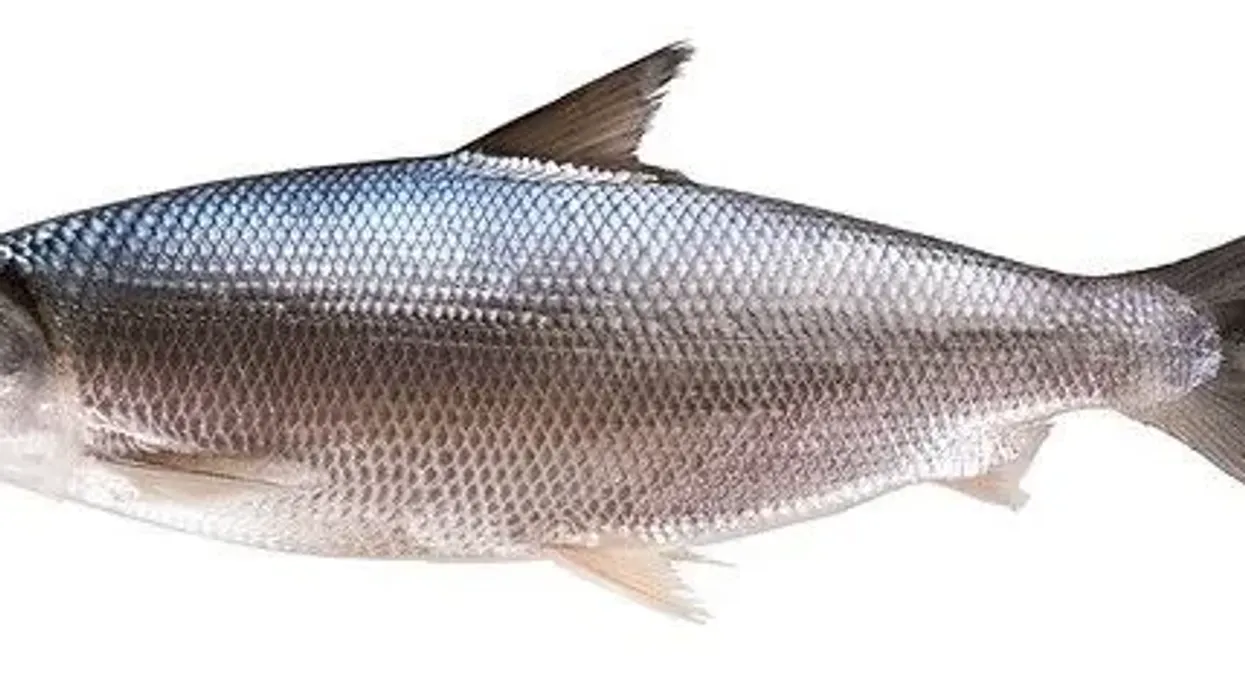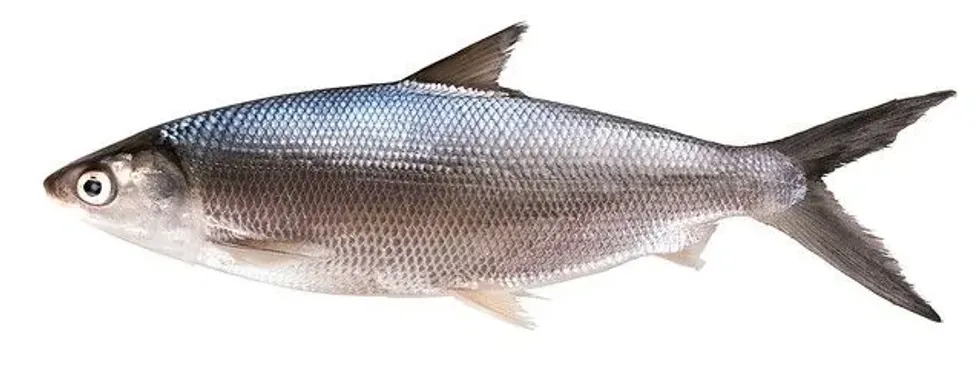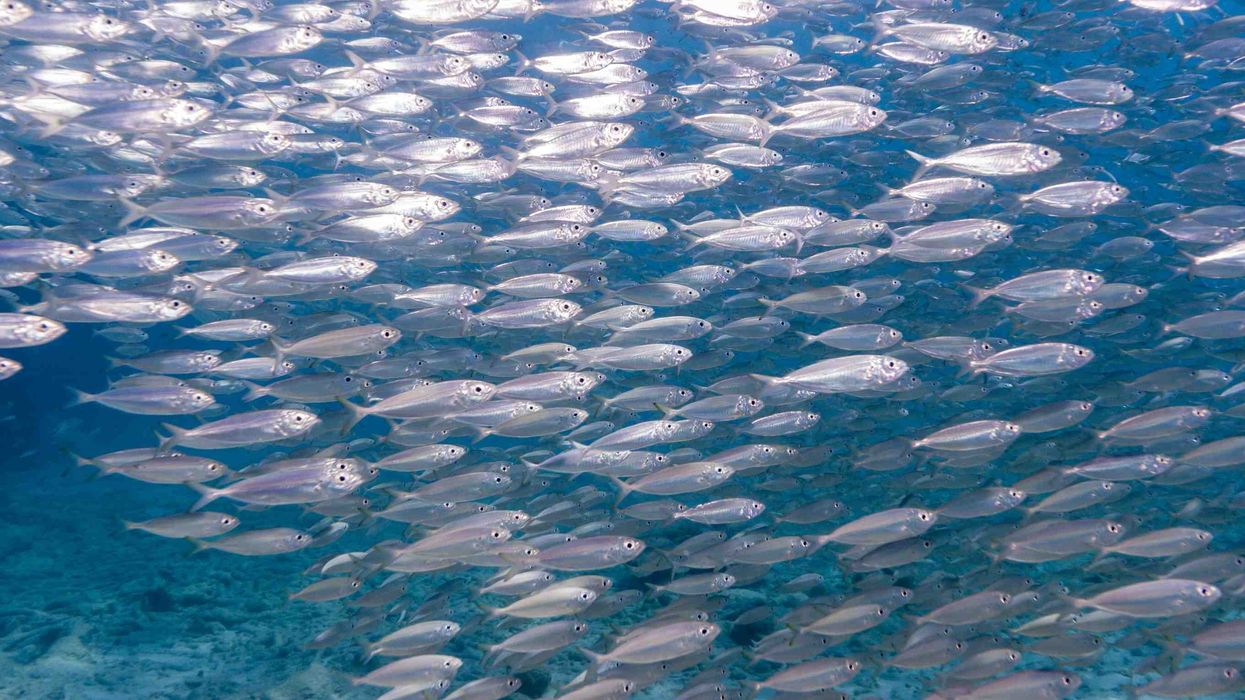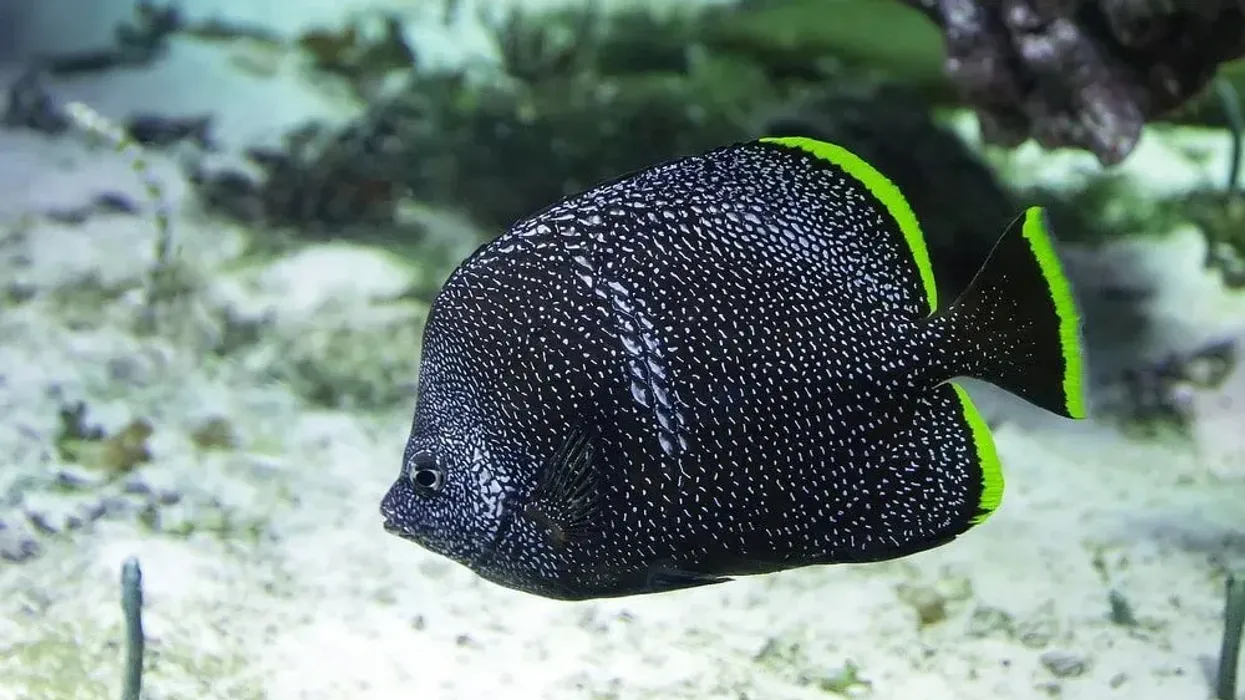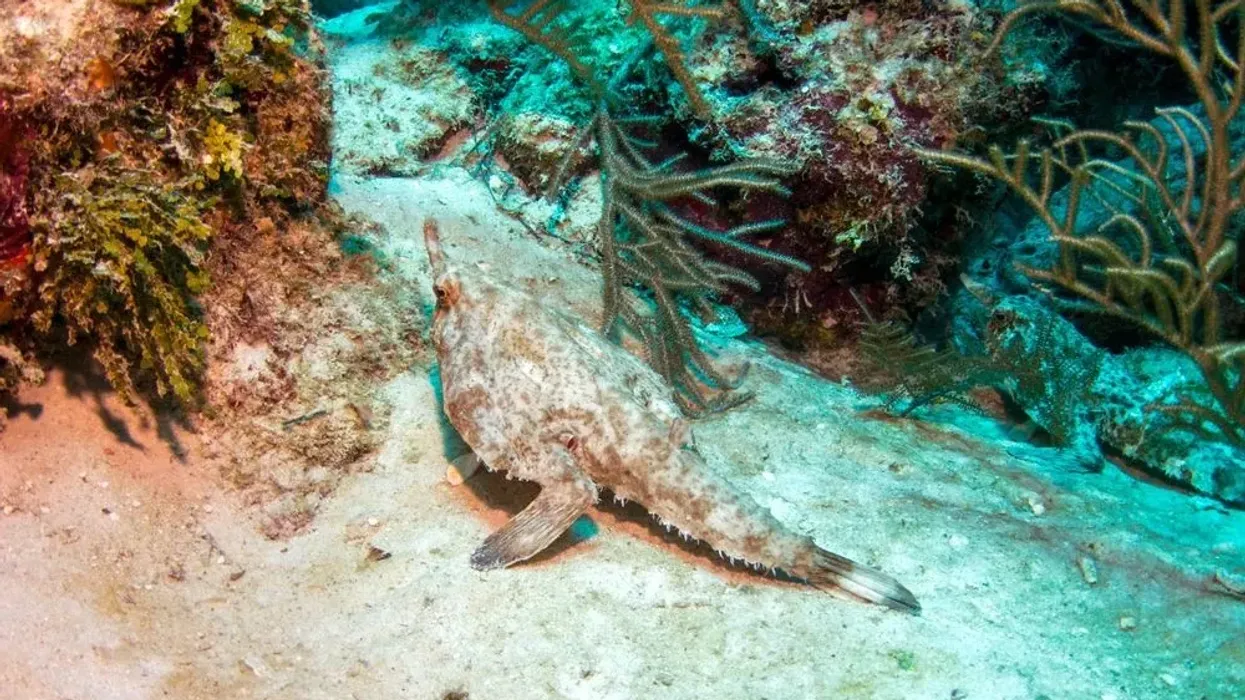Milkfish, more commonly known as Chanos Chanos, Bangus, or Bandeng, is a type of important fish that lives in both freshwater and seawater. They are known to be omnivorous in nature, often feeding on small bacteria, algae, and invertebrates.
In appearance, they are larger than most fish commonly known to us and can grow over a meter in length. Milkfish has a silvery hue throughout its body with tones of olive green and blue on the back.
It also has a deeply forked tail (caudal fin). They also don’t have teeth and are known to be quite “bony”. Milkfish commonly live in Southeast Asia – mainly in the Indian Ocean and the Pacific Ocean.
They also breed around tropical island waters, particularly around the Pacific islands. People often enjoy eating the white meat of the Milkfish, as it has a mild flavor that complements a variety of savory delicacies.
Milkfish is one of the most commonly bred fish species as it is known to survive in varying water conditions. Let's find out more information about this popular fish.
If you like this article, why not check out more facts on longhorn cowfish and Caribbean reef shark!
Milkfish Interesting Facts
What type of animal is a Milkfish?
Milkfish (Chanos Chanos or Bandeng), as the name suggests, is a type of fish species belonging to the family Chanidae. It is quite popular in Southeast Asia and is also known for its use in a variety of dishes.
What class of animal does a Milkfish belong to?
Milkfish is a type of fish belonging to the Animalia kingdom, class Actinopterygii.
How many Milkfish are there in the world?
Milkfish (Chanos Chanos) is classified under the Least Concern category, meaning that these fish are not extinct and are still being bred in many parts of the world. Milkfish is found in abundance in and around Southeast Asian countries, where they are popular for their use in a number of delicacies.
Milkfish is also extensively bred in captive conditions, which ensures that their population does not decline any time soon.
Where does a Milkfish live?
Milkfish are quite popular in Asia, the Philippines, Pacific Islands, and other tropical regions. They have also been found around the coast of California.
Milkfish (Chanos Chanos) are popular due to their ability to adapt to a variety of water conditions. They are usually found in marine regions, but they can also be kept in shallow waters like small ponds and sea cages as well, especially since they feed on algae.
One interesting fact is that Milkfish cannot breed in freshwater. They need to breed in seawater and the larvae can be brought to freshwater or sea cages, where they can grow into adult fish.
What is a Milkfish habitat?
Milkfish or Bandeng can live in different habitats depending on their age. When Milkfish breed, they release their small larvae into the ocean, where they grow to become adults.
They often move to lakes, bays, and estuaries and can grow to their full adult size in these areas. It's common to find adult Milkfish living in tropical coastal areas. They prefer to live near rich sea reefs and shallow waters, as they are more likely to find the food of their choice in these regions.
Who do Milkfish live with?
Milkfish live and move in groups called schools. Adult milkfish are able to live and feed themselves near shallow tropical waters in packs. People who venture near shallow marine waters for fishing will notice these fish flocking together in groups.
How long does a Milkfish live?
Animal researchers are often able to determine the age of a fish by assessing the number of rings on its vertebrae. By this measure, they have found that the average lifespan of the adult wild Milkfish near the Philippines and Taiwan is about three to seven years.
Milkfish are also able to live longer, about 12-15 years when they're bred in captivity via aquaculture.
How do they reproduce?
Milkfish are known to migrate between the sea and other freshwater bodies. Initially, the young fishes live at sea for a couple of weeks. When they become juveniles, they migrate to freshwater areas like mangrove swamps and estuaries.
The juveniles later return to sea, where they mature sexually. Breeding in Milkfish occurs via spawning. Female milkfish then reproduce in saline shallow waters.
They can release up to five million eggs when they spawn at night. These eggs fertilize with the sperm produced by the male. The cycle continues once again when the larvae become young fish and eventually mature.
What is their conservation status?
Milkfish (Chanos Chanos) is currently not registered on any conservation registry. This indicates that the population of this fish species is stable, despite rampant fishing activities in coastal areas.
Milkfish Fun Facts
What do Milkfish look like?
The milkfish has a streamlined appearance, and its body is quite symmetrical. The body is elongated and quite lean and compressed.
Milkfish have quite a distinct, large, deeply forked caudal fin. It also has large scale flaps. These fish often grow up to one meter in length, and some can even grow up to 1.8 m. While their weight ranges between 17 lb (7-8 kg), they can reach a maximum weight of 30 lb (14 kg).
As for its hue, the Milkfish has a body that is silvery with tones of olive green. Its flanks are also silvery, complemented by dark bordered fins.
How cute are they?
Milkfish are not particularly known for their cuteness quotient. They look like any other common fish, but fishing enthusiasts are quite happy when they can get a hold of a sizable Milkfish.
How do they communicate?
Scientists have attempted to study the behavior of Chanos Chanos or Milkfish, but very little has been discovered about how they communicate. Like most fish, wild Milkfish also have a keenly developed sensory system as well as advanced vision.
They are able to communicate with one another by producing and responding to an alarm substance. When a predator attacks the wild Milkfish, the injured area of its skin releases an alarm substance that acts as a signal to other fish of their group to hide away.
In addition, researchers have noticed that wild Milkfish gather in large schools in well-developed reefs and other coastal areas. This characteristic is indicative that Milkfish are indeed social in nature.
How big is a Milkfish?
Milkfish usually grow up to one meter in length, but a lot of Milkfish can grow even longer, sometimes up to 1.8 m - which is the same as a 6-foot tall individual! For yet another comparison, the size of a Milkfish would be the same as the length of an elephant's trunk!
This goes to show why people enjoy fishing for wild Milkfish so eagerly.
How fast can a Milkfish swim?
Not much information is available on the average swimming speed of the Milkfish, but these fish are known to travel around a lot. They migrate between deep sea water and freshwater quite frequently, especially when they have to reproduce or when they mature sexually. Interestingly, Milkfish are also capable of swimming upriver into lakes.
How much does a Milkfish weigh?
Milkfish usually weigh around 7.7 kg, which is about 15-16 lb. Some Milkfish have also grown large enough to weigh 14 kg, which is about 30 lb! Fishing enthusiasts consider themselves lucky when they are able to capture a large Milkfish.
What are their male and female names of the species?
The males and females of the Milkfish species don't have separate names.
What would you call a baby Milkfish?
Baby Milkfish are called baby Bangus in the Philippines, where they are mostly bred and enjoyed widely. Baby Bangus are also used as bait while fishing to capture other fish in the ocean.
What do they eat?
Milkfish live in tropical marine regions and hence feed on benthic diatoms or algae that they find in their natural environment. When bred in artificial sea tanks or ponds, Milkfish larvae are usually given copepods, brine shrimp, and rotifers. The larvae can also be provided with Milkfish fry within a week after hatching.
Are they poisonous?
Milkfish are safe to consume, but there have been some reports of these fish containing larger-than-normal amounts of mercury and histamine. These elements could be harmful to the human body when consumed in excess.
Would they make a good pet?
Milkfish are not kept as pets because they grow to be very large in size, which would not be feasible for a home aquarium.
Did you know...
Milkfish have a unique name. These fish are named so because of their white, flaky, and tender meat when cooked, the color of which closely resembles milk.
Interestingly, Milkfish is the sole living species in the family Chanidae.
Milkfish are great to eat
Milkfish is commonly reared and eaten in a lot of Asian countries, especially in the Philippines, Taiwan, and Indonesia. Fish farms around these countries have been raising this fish for over five centuries.
The people in the Philippines, in particular, love incorporating Milkfish (Bangus or Bandeng) into a lot of their dishes. On average, they eat over 250,000 pounds of this fish every year.
Milkfish is rejoiced by people due to its tender flesh and mild taste, which complements a variety of flavors. It can be simply steamed, pan-seared, or sautéed.
Additionally, Bangus can be made into fish balls and also used in curries. In terms of Milkfish nutrition, Milkfish is also rich in omega-3 fatty acids, making it a healthy choice for many people.
Many Asian countries like the Philippines love breeding the Chanos Chanos and consider it a staple in their diet. People in the west, particularly around the coast of California and Hawaii, have also developed a liking towards this fish species as food and partake in fishing activities as well.
Other animals in their habitat
Milkfish live in the sea and also around mangroves, estuaries, lakes, and ponds. As such, the other animals in their habitat are usually a variety of other sea creatures. Milkfish can also survive in shallow, warm waters near island shores, and hence live around small crustaceans as well.
Here at Kidadl, we have carefully created lots of interesting family-friendly animal facts for everyone to discover! Learn more about some other fish including the codfish, or the Baiji Dolphin.
You can even occupy yourself at home by drawing one of our milkfish coloring pages.

